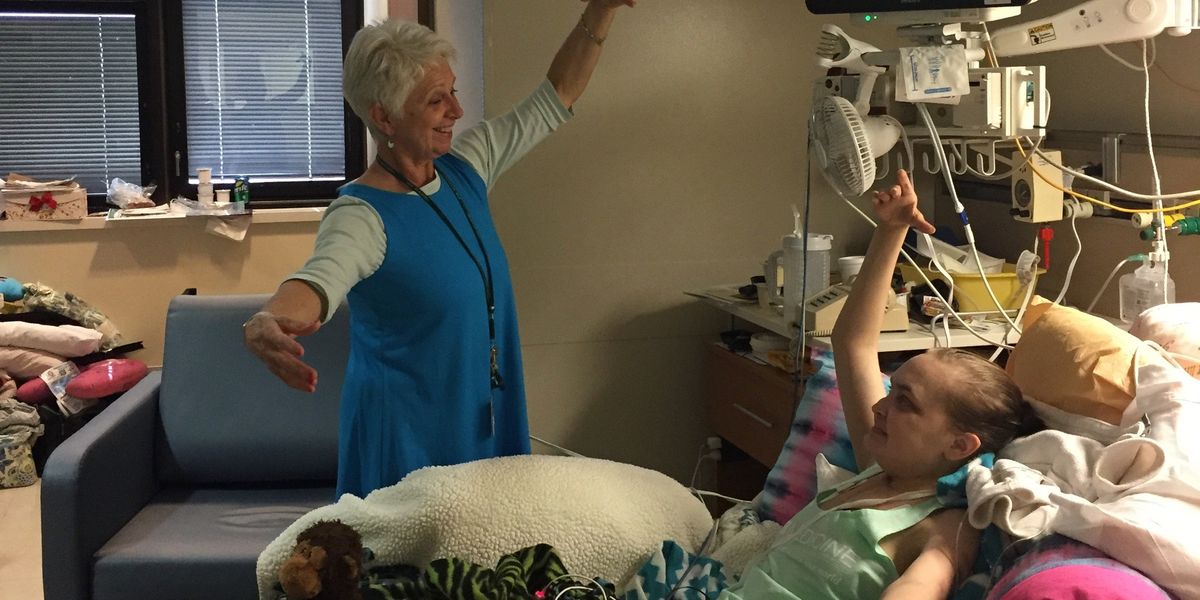This Dance Teacher Is On a Mission to Bring More Dance to Hospitals—Even in a Pandemic
As COVID-19 persists, dance teachers everywhere are adapting their classes for online platforms. One such teacher, Birmingham, Alabama-based Melissa Turnage, is finding it especially vital. “I have been banned from the hospital for the last six weeks,” she says. “If there is a need, you just have to figure it out.”
Turnage is a dance artist in residence at the University of Alabama at Birmingham Hospital and a dance/movement specialist at Children’s Hospital of Alabama and St. Vincent’s Birmingham. Though she’s not a dance therapist, her dance classes for patients have shown therapeutic benefits. “They sleep better. Their mood is better. Physically they feel better,” she says.
To continue offering dance despite the pandemic, she’s made DVDs for each of the units she works with, and has left a “dance mobility toolkit”—a box of scarves, ribbon sticks, balls, streamers and other props—so that hospital staff can lead classes.
Her work began five years ago when UAB Hospital connected with Turnage and four other teachers about offering dance to patients. Initially hired to work with the adolescent psychiatric unit, she now works with patients of all ages and abilities.

Though her classes have therapeutic benefits, Turnage’s work is different from dance therapy. “The difference between what I do and what a dance therapist might do is that I do not chart,” she says. “I do not have therapeutic goals. I have much more flexibility.”
Her approach is to meet patients where they’re at, intuit what is needed and then shift gears if necessary. “I don’t really have a goal other than having the patient feel better when I’m through with them. Simple things like getting in a circle and throwing scarves gets people smiling immediately.” she says.
Turnage’s classes are predominantly creative movement-based, though she does thread in basic choreography when possible. In a hospital setting, where patients could have any number of physical considerations, safety is key. She offers a seated warm up with the option of standing up for those who can. For patients who are hooked up to an IV, like heart and lung transplant patients, Turnage goes to their rooms and offers gentle movement activities.
Over the years, Turnage has seen the true impact of dance as a tool for healing. Patients often report feeling physically, mentally and emotionally better after dance classes. “Seeing the smile come on a patient’s face, they are not their diagnosis anymore,” she says. “It’s such an honor to be in the room with patients when that light comes on.”
Turnage remembers one adolescent patient, who after a session commented, “I learned I could talk without talking!” Another patient, a young girl recovering from an accident, missed her ballet classes during her recovery. Turnage created an adaptive ballet barre she could do in her hospital room. “She was a dancer again!” she remembers. “She was not a patient.”
Despite the benefits Turnage and her patients see, it’s still rare to have dance residencies in hospitals. She hopes to change that in the coming years. “My mission is to get the word out that this work is so valuable,” she says. “Dance should be a healing modality in every hospital.”




